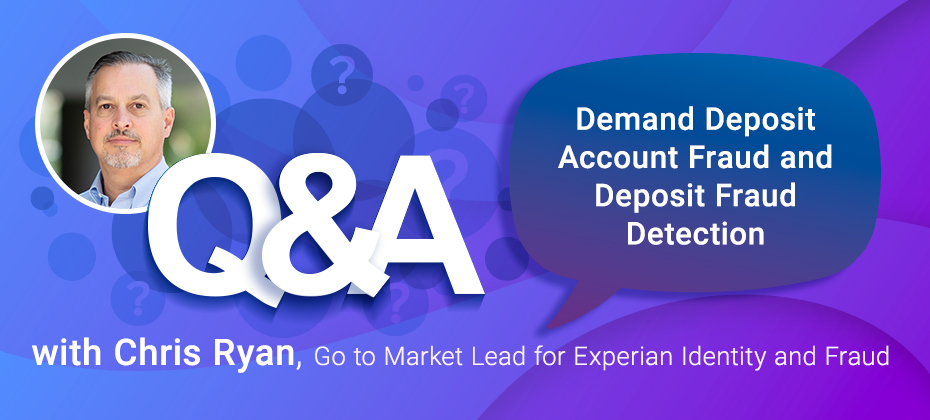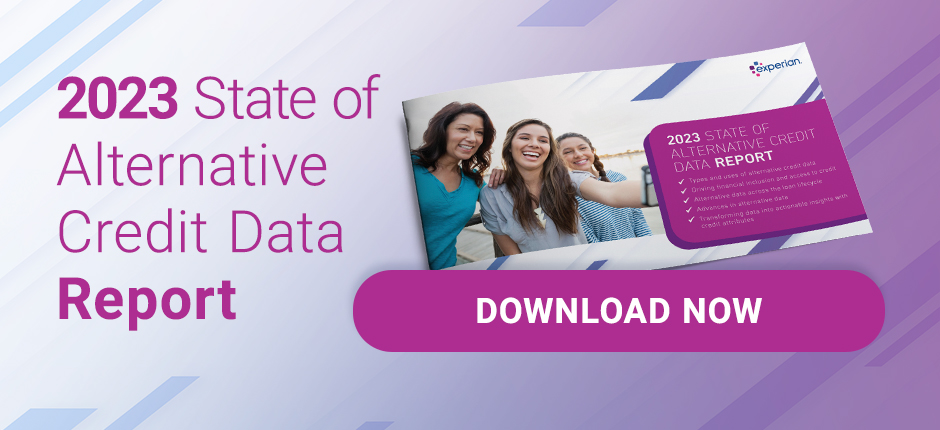Latest Posts

Fraud is a serious concern for everyone, including businesses and individuals. In fact, according to our 2023 U.S. Identity and Fraud Report, nearly two-thirds (64%) of consumers are very or somewhat concerned with online security, and over 50% of businesses have a high level of concern about fraud risk. The fraud landscape is constantly evolving, and staying vigilant against the latest trends is critical to safeguarding your organization and consumers. As we reflect on 2023, let’s look at the top fraud trends and their continued potential impact on your business. The evolution of new fraud trends When economic uncertainty reigns, a rise in fraud often follows. To begin with, consumers tend to be financially stressed in such periods and prone to making risky decisions. In addition, fraudsters are keenly aware of the opportunities inherent in unstable times and develop tactics to take advantage of them. For example, as consumers rein in spending and financial institutions struggle to maintain new account volumes, fraudsters might ramp up their new account and loan activities. Fraud is becoming more sophisticated. For instance, thanks to the rapid rise in the availability of artificial intelligence (AI) tools, fraudsters are increasingly able to impersonate companies and individuals with ease, as well as consolidate data from diverse sources and use it more efficiently. The most impactful fraud trends of 2023 The fraud trends that emerged in 2023 were diverse, though they all had one thing in common: fraudsters' keen ability to take advantage of new technologies and opportunities. And businesses are feeling the repercussions, with nearly 70% reporting that fraud losses have increased in recent years. Here are five trends we forecasted in the fraud and identity space that challenged fraud fighters on the front lines this year. Deposit and checking account fraud With everyone focused on fraud in the on-line channels, it is interesting that financial institutions reported more fraud occurring at brick-and-mortar locations. Preying on the good nature of helpful branch employees, criminals are taking risks by showing up in person to open accounts, pass bad deposits and try to work their way into other financial products. The Treasury Department reports complaints doubling YoY, after increasing more than 150% between 2020 and 2021. Synthetic identity fraud Not quite fake, not quite real, so-called synthetic or "Frankenstein" identities mash up real data with false information to create unique customer profiles that can outsmart retailers' or financial institutions' fraud control systems. With synthetic identity (SID) fraud real data is often stolen or purchased on the dark web and combined with other information — even Artificial Intelligence (AI)-created faces — so that fraudsters can build up a synthetic identity's credit score before taking advantage of them to borrow and spend money that will never be paid back. One major risk? As fraud rates rise due to the use of tactics like synthetic identities, it could become more challenging and expensive to access credit. Fake job postings and mule schemes Well-paying remote work was in high demand this year, creating opportunities for fraudsters to create fake jobs to harvest data such as Social Security numbers from unsuspecting applicants. Experian also predicts a continued rise in "mule" jobs, in which workers unknowingly sign on to do illegal work, such as re-shipping stolen goods. According to the Better Business Bureau, an estimated 14 million people get caught in a fake employment scam yearly. Job seekers can protect themselves by being skeptical of jobs that ask them to do work that appears suspicious, requires money, financial details, or personal information upfront. Peer-to-peer payment fraud Peer-to-peer payment tools are increasingly popular with consumers and fraudsters, who appreciate that they're both instant and irreversible. Experian expects to continue to see an increase in fraudulent activity on these payment systems, as fraudsters use social engineering techniques to deceive consumers into paying for nonexistent merchandise or even sharing access credentials. Stay safe while using peer-to-peer payment tools by avoiding common scams like requests to return accidental payments, opting for payment protection whenever possible and choosing other transaction methods like paying with a credit card. Social media shopping fraud Social media platforms are eager to make in-app shopping fun and friction-free for consumers — and many brands and shoppers are keen to get on board. In fact, approximately 58% of users in the U.S. have purchased a product after seeing it on social media. Unfortunately, these tools neglect effective identity resolution and fraud prevention, leaving sellers vulnerable to fraudulent purchases. And while buyers have some recourse when a purchase turns out to be a scam, it's wise to be cautious while shopping on social media platforms by researching sellers, only using credit cards and being cognizant of common scams, like when vendors on Facebook Marketplace ask for payment upfront. Employer text fraud Fraudulent text messages — also known as “smishing,” a mash-up of Short Messaging Service (SMS) and phishing — continues to rise. In fact, according to data security company Lookout, 2022 was the biggest year ever for such mobile phishing attacks, with more than 30 percent of personal and enterprise mobile phone users exposed every quarter. One modern example of these types of schemes? Expect to continue to see a rise in gift card fraud targeting companies. For example, an employee might receive a text from their "boss" asking them to purchase gift cards and relay the numbers. The fraudsters get to shop, and the company is left with the bill. Why fraud prevention and detection solutions matter Nearly two-thirds of consumers say they are "very" or "somewhat concerned" with online security, and more than 85 percent expect businesses to respond to their identity and fraud concerns. Addressing and preventing fraud — and communicating these fraud-prevention actions to customers — is an essential strategy for businesses that want to maintain customer trust, thereby decreasing churn and maximizing conversions on new leads. There's a financial imperative to address fraud as well. Businesses stand to lose a great deal of money without adequate fraud prevention strategies. Account takeover fraud, for example, is an increasing threat to financial institutions, which saw a 90 percent increase in account takeover losses from 2020 to 2021. By making account takeover fraud prevention a priority, financial institutions can alleviate risks and prevent major losses. How to build an effective fraud strategy in 2024 In 2024, fraud management solutions must be even more technically advanced than the fraudulent techniques they're combating. But more than that, they need to be appealing to consumers, who are likely to abandon signup or purchase attempts when they become too onerous. In fact, 37% of consumers have moved their business elsewhere due to a negative account opening experience. Worryingly for businesses, this number was even higher among high-income households and those aged 25 to 39. To succeed, effective fraud strategies must be seamless, low friction, data-driven and customer-focused. That means making use of up-to-date technologies that boost security while prioritizing a positive customer experience. Concerned about fraud? Let Experian help As we look back at the top fraud trends of 2023, it's clear that scammers are becoming increasingly sophisticated in their methods. Fraud can create huge risks for your business — but there are ways to act. Experian's suite of fraud prevention and identity verification tools can help you detect and combat fraud. Find out more about Experian's fraud risk management strategies and how they can help keep you and your customers safe. Learn more

Online activity is a routine part of people’s days. Americans spend an average of 4 hours and 25 minutes on their phones every day,[1] and many regularly use multiple devices to access the internet. However, with more time spent in the digital space, the risk of identity theft and fraud also continues to grow. The growing threat of identity fraud This year, the FTC has already received 5.7 million total fraud and identity theft reports, 1.4 million of which were identity theft cases.[2] More consumers are becoming vulnerable to the threat of identity fraud, but many are unsure of how to protect themselves. To avoid monetary loss and significant lifestyle disruption, consumers are looking to their financial institutions to provide resources to help them prevent identity theft and protect their personal information online. Consumers want identity protection from their financial institutions Consumers also expect their banks to carry the responsibility of protecting their private data from the risk of theft. While most of them trust in the security provided by their banks, about 50% of consumers want their banks to offer additional protective measures.[3] This creates an opportunity for financial institutions to fulfill the role of “data protector” for the customers that depend on them. The convenience of a full suite of financial services all in one place is also important to consumers, as 45% would prefer to get all their banking products from the same financial institution.[4] While consumers need identity protection, businesses need new ways to engage their customers and drive more revenue. Fortunately, offering identity protection is an effective way to maintain a sticky relationship with your customers while delivering an enhanced, engaging experience. Protect your customers from fraud with Identity Protection Services With identity protection, your customers can: Check for exposed personal information and lower their risk of identity theft Reduce their exposure and decide who can track their activity and access their personal information online Keep control of their digital identity by reclaiming exposed personal information, increasing their privacy, and avoiding future risk An identity protection solution provides a comprehensive strategy to avoid the risk of identity theft, while delivering exceptional results that your customers need to feel safe and secure. Providing frequent updates and recommendations about their digital identity and credit score allows you to maintain an engaging communication channel with your customers and boost your brand interaction. For example, the average Experian® user had a 60% alert open rate and 12% post-alert login rate.[5] As they continue to receive useful suggestions for strengthening their online security, your customers may interact with your app or website more regularly and consistently. This can create valuable opportunities for you to encourage them to open new accounts, start new credit lines, or borrow more money. In addition, giving your customers an added layer of assurance can drive them to remain loyal, long-standing customers to your business. 96% of active Experian subscribers with a free bundle were still subscribed after 12 months[6] 90% of active Experian subscribers with a paid bundle were still subscribed after 12 months[6] Less than 1% churn rate with fewer than 100 service calls[7] Consumers want protection from thieves who might steal their personal information, and they expect it from a trusted source. By offering an identity protection solution, you can foster stronger relationships with your customers while reducing their vulnerability to fraud. Visit our website to see how Identity Protection Services can help you deliver best-in-class protection for your customers. [1] PC Magazine. Americans Check Their Phones an Alarming Number of Times Per Day. May 2023. [2] IdentityTheft.org. 2023 Identity Theft Facts and Statistics. [3] PYMTS. Half of Consumers Want More Security Measures From Banks, January 2023. [4] PYMTS. 45% of US Consumers Want Banking Bundles. August 2022. [5] Experian Data, average user experience with Digital Identity Manager, May 2023. [6] Experian data, August 2023. [7] Experian Data, average user experience with Digital Identity Manager, May 2023.

Financial institutions are under increasing pressure to grow deposits and onboard more demand deposit accounts (DDA). But as demand increases, so do fraud attempts from scammers. While a robust mitigation effort is needed to stop fraud, this same effort can also drive away potential clients. In fact, 37 percent of U.S. adults said that they abandoned opening an account online due to experiencing friction. This leaves institutions in a unique quandary: how do they stop DDA fraud without scaring away potential clients? The answer lies in utilizing robust, machine learning tools that can help you navigate fraud attempts without increasing onboarding friction. Chris Ryan, Go to Market Lead for Experian Identity and Fraud, shares his thoughts on demand deposit account fraud and which decisioning tools can best combat it. Q: What is a demand deposit account and how is it used? "Demand deposit is just your basic checking account," Ryan explains." The funds are deposited and held by an institution, which enables you to spend those assets or resources, whether it be through checks, debit cards, person-to-person, Automated Clearing House (ACH) — all the things we do every day as consumers to manage our operating budget." Q: What is demand deposit account fraud? "There are two different ways that demand deposit account fraud works," Ryan says. "One is with existing account holders, and the other is with the account opening process.” When fraud affects existing account holders, it typically involves tricking an account holder into sending money to a scammer or using fraudulent actions, like phishing emails or credit card skimmers, to gain access to their accounts. There is also a resurgence in fraud involving duplication, theft and forgery of paper checks, Ryan explains. Fraud impacting the account opening process occurs when scammers originate new DDAs. This can work in a variety of ways, such as these three examples: A scammer steals your identity and opens an account at the same bank where you have a home equity loan. They link their DDA to your line of credit, transferring your money into their new account and withdrawing the funds. A scammer uses a synthetic identity (SID) to open a fraudulent DDA. They will then use this new DDA to open more lucrative accounts that the institution cross-sells to them. A scammer uses a stolen or SID to open “mule” accounts to receive funds they dupe consumers into sending through fake relationship schemes, bogus merchandise sales and dozens of similar scams. While both types of fraud need to be dealt with, account opening fraud can have especially large repercussions for lenders or financial institutions. Q: What are the consequences of DDA fraud for organizations? "Fraud hurts in a number of ways," Ryan explains. "There are direct losses, which is the money that criminals take from our financial system. Under most circumstances, the financial institution replaces the money, so the consumer doesn’t absorb the loss, but the money is still gone. That takes money away from lending, community engagement and other investments we want banks to make. The direct losses are what most people focus on." But there are even more repercussions for institutions beyond losing money, and this can include the attempts that institutions put into place to stop the fraud. "Preventing fraud requires some friction for the end consumer," Ryan says. "The volume of fraudulent attempts is overwhelmingly large in the DDA space. This forces institutions to apply more friction. The friction is costly, and it often drives would-be-customers away. The results include high costs for the institutions and low booking rates. At the same time, institutions are hungry for deposit money right now. So, it's kind of a perfect storm." Q: What is the impact of DDA fraud on customer experience? Experian’s 2023 Identity and Fraud Report revealed that up to 37 percent of U.S. adults in the survey had abandoned a new account entirely in the previous six months because of the friction they encountered during onboarding. And 51 percent reported considering abandoning the process because of problems they encountered. Unfortunately, fraud mitigation and deposit fraud detection efforts can end up driving customers away. "People can be impatient," Ryan says, "and in the online world, a competing product is a mouse-click away. So, while it is tempting to ask new applicants for more information, or further proof of identity, that conflicts with their need for convenience and can impact their experience.” Companies looking for cheap and fast mitigation can end up impeding customers trying to onboard to sweep out the bad actors, Ryan explains. "How do you get the bad people without interrupting the good people?" Ryan asks. "That's the million-dollar question." Q: What are some other problems with how organizations traditionally combat DDA fraud? Unfortunately, traditional attempts to combat DDA fraud are inefficient due to the fragmentation of technology. Ryan says this was revealed by Liminal, an industry analyst think tank. "Nearly half of institutions use four-or-more-point solutions to manage identity and fraud-related risk," Ryan explains. "But all of those point solutions were meant to work on their own. They weren't developed to work together. So, there's a lot of overlap. And in the case of fraud, there's a high likelihood that the multiple solutions are going to find the same fraud. So, you create a huge inefficiency." To solve this challenge, institutions need to shift to integrated identity platforms, such as Experian CrossCore®. Q: How is Experian trying to change the way organizations approach DDA fraud? Experian is pushing a paradigm shift for institutions that will increase fraud detection efficiency and accuracy, without sacrificing customer experience. "Organizations need to start thinking of identity through a different lens," Ryan says. Experian has developed an identity graph that aggregates consumer information in a manner that reaches far beyond what an institution can create on its own. "Experian is able to bring the entire breadth of every identity presentation we see into an identity graph," Ryan says. "It's a cross-industry view of identity behavior." This is important because people who commit fraud manipulate data, and those manipulations can get lost in a busy marketplace. For example, Ryan explains, if you're newly married, you may have recently presented your identity using two different surnames: one under your maiden name and one under your married name. Traditional data sources may show that your identity was presented twice, but they won’t accurately reflect the underlying details; like the fact that different surnames were used. The same holds true for thousands of other details seen at each presentation but not captured in a way that enables changes over time to be visible, such as information related to IP addresses, email accounts, online devices, or phone numbers. "Our identity graph is unlocking the details behind those identity presentations," Ryan says. "This way, when a customer comes to us with a DDA application, we can say, 'That's Chris's identity, and he's consistently presenting the same information, and all that underlying data remains very stable.'" This identity graph, part of Experian's suite of fraud management solutions — also connects unique identity details to known instances of fraud, helping catch fraudulent attempts much faster than traditional methods. "Let's say you and your spouse share an address, phone numbers, all the identity details that married couples typically share," Ryan explains. "If an identity thief steals your identity and uses it along with a brand-new email and IP address not associated with your spouse, that might be concerning. However, perhaps you started a new job, and the email/IP data is legitimate. Or maybe it’s a personal email using a risky internet service provider that shares a format commonly used by a known ring of identity thieves. Traditional data might flag the email and IP information as new, but our identity graph would go several layers deeper to confirm the possible risks that the new information brings. Q: Why is this approach superior to traditional methods of fraud detection? "Historically, organizations were interested in whether an identity was real,” Ryan says. "The next question was if the provided data (I.e., addresses, date of birth, Social Security numbers, etc.) have been historically associated with the identity. Last, the question would be whether there’s known risk associated with any of the identity components.” The identity graph turns that approach upside down. "The identity graph allows us to pull in insights from past identity presentations, " Ryan says. "Maybe the current presentation doesn’t include a phone number. Our identity graph should still recognize previously provided phone numbers and the risks associated with them. Instead of looking at identity as a small handful of pieces of data that were given at the time of the presentation, we use the data given to us to get to the identity graph and see the whole picture." Q: How are businesses applying this new paradigm? The identity graph is part of Experian's Ascend Fraud Platform™ and a full suite of fraud management solutions. Experian's approach allows companies to clean out fraud that already occurred and stop new fraudulent actors before they're onboarded. "Ideally, you want to start with cleaning up the house, and then figure out how to protect the front door," Ryan says. In other words, institutions can start by applying this view to recently opened accounts to identify problematic identities that they missed. The next step would be to bring these insights into the new account onboarding process. Q: Is this new fraud platform accessible to both small and large businesses? The Ascend Fraud Platform will support several use cases that will bring value to a broad range of businesses, Ryan explains. It can not only enable Experian experts to build and deliver better tools but can enable self-serve analytical development too. "Larger organizations that have robust, internal data science capabilities will find that it’s an ideal environment for them to work in," Ryan says. "They can add their own internal data assets to ours, and then have a better place to develop analytics. Today, organizations spend months assembling data to develop analytics internally. Our Ascend Fraud Platform will reduce the timeline of the data assembly and analytical development process to weeks, and speed to market is critical when confronting continually changing fraud threats. "But for customers who have less robust analytical teams, we're able to do that on their behalf and bring solutions out to the marketplace for them," Ryan explains. Q: What type of return on investment (ROI) are businesses experiencing? "Some customers recover their investment in days," Ryan says. "Part of this is from mitigating fraud risks among recently opened accounts that slipped through existing defenses.” "In addition to reducing losses, institutions we're working with are also seeing potentially millions of dollars a month in additional bookings, as well as significant cost savings in their account opening processes," Ryan says. "We're able to help clients go back and audit the people who had fallen out of their process, to figure out how to fine-tune their tools to keep those people in," Ryan says. “By reducing risks among existing accounts, better protecting the front door against future fraud, and growing more efficiently, we’re helping clients Q: What are Experian's plans for this service? "We're working with top-tier financial institutions on the do-it-yourself techniques," Ryan says. "In parallel, we're launching our first offerings that are created for the broader marketplace. That will start with the portfolio review capability, along with making the most predictive attributes available through our integrated identity resolution platform. And while the Ascend Fraud Platform has a strong use case for DDA fraud, its uses extend beyond that to small business lending and other products. In fact, Experian offers an entire suite of fraud management solutions to help keep your DDA accounts secure and your customers happy. Experian can help optimize your DDA fraud detection Experian is revolutionizing the approach to combating DDA fraud, helping institutions create a faster onboarding process that retains more customers, while also stopping more bad actors from gaining access. It's a win-win for everyone. Experian's full suite of fraud management solutions can optimize your business's DDA fraud detection, from scrubbing your current portfolio to gatekeeping bad actors before they're onboarded. Learn more Speak with a specialist About our expert: Chris Ryan has over 20 years of experience in fraud prevention and uses this knowledge to identify the most critical fraud issues facing individuals and businesses in North America, and he guides Experian’s application of technology to mitigate fraud risk.

In today's fast-paced digital world, the risk of fraud across all industries is a constant threat. The traditional methods of fraud detection are no longer sufficient, as fraudsters become increasingly sophisticated in their attacks. However, with artificial intelligence (AI) and machine learning (ML) solutions, financial institutions can stay one step ahead of fraudsters. AI and machine learning-equipped fraud detection tools have the ability to identify suspicious activity and patterns of fraud that are imperceptible to the human brain. In this blog post, we’ll dive into the significance of AI and machine learning in fraud detection and how these solutions are uniquely equipped to handle the demands of modern-day risk management. Understanding artificial intelligence and machine learning AI and machine learning solutions are transformative technologies that are reshaping the landscape of many industries. AI, at its core, is a field of computer science that simulates human intelligence in machines, enabling them to learn from experience and perform tasks that normally require human intellect. Machine learning, a subset of AI, is the science of getting computers to learn and act like humans do, but with minimal human intervention. They can analyze vast amounts of data within seconds, identifying patterns and trends that would be impossible for a human to recognize. When it comes to fraud detection, this ability is invaluable. Advantages of fraud detection using machine learning AI and machine learning have several benefits that make them valuable in fraud detection. One significant advantage is that these technologies can recognize patterns that are too complex for humans to identify. By running through a vast set of data points, these solutions can pinpoint anomalous behavior, and thereby prevent financial losses. AI analytics tools are adept at monitoring complex networks, detecting the dispersion of attacks that may involve multiple individuals and entities, and correlating activity patterns that would otherwise be hidden. Machine learning algorithms can take these patterns and turn them into mathematical models that help identify instances of fraud before the damage takes place. Secondly, they continuously learn from new data, which allows them to become more efficient in identifying fraud as they process more data. Thirdly, they automate fraud mitigation processes, which significantly reduces the need for manual interventions that may consume valuable time and resources. Another significant benefit of machine learning is its analytics capabilities, which allow organizations to gain valuable insights into customer behavior and fraud patterns. With AI analytics, they can detect and investigate fraudulent activities in real-time, and combine it with other tools to help detect and mitigate fraud risk. For example, in financial services, AI fraud detection can help banks and financial service providers detect and prevent fraud in their systems, add value to their services and improve customer satisfaction. The future of fraud detection and machine learning The rate at which technology is evolving means that machine learning and AI fraud detection will become increasingly important in the future. In the next few years, we can expect a more sophisticated level of fraud detection using unmanned machine systems, robotics process automation, and more. Ultimately, this will improve the efficiency and effectiveness of fraud detection. AI-based fraud management solutions are taking center stage. Organizations must leverage advanced machine learning and AI analytics solutions to prevent and mitigate cyber risks and comply with regulatory mandates. The benefits extend far beyond the financial bottom line to improving the safety and security of customers. AI and machine learning solutions offer accurate, efficient and proactive routes to managing the risk of fraud in an ever-changing environment. How can Experian® help Integrating machine learning for fraud detection represents a significant advancement in cybersecurity. Fraud management solutions detect, prevent and manage fraud across all industries, including financial services, healthcare and telecommunications. With the advancement of technology, fraud management solutions now integrate machine learning to improve their processes. Experian® provides fraud prevention solutions, including machine learning models and AI analytics, which can help more effectively mitigate fraud risk, streamline fraud investigations and create a more secure digital environment for all. With Experian’s AI analytics, risk mitigation tools and fraud management solutions, organizations can stay one step ahead of fraudsters and protect their brand reputation, customer trustworthiness and corporate data. Embracing these solutions can save organizations from significant losses, reputational damage and regulatory scrutiny. To learn more about how to future-proof your business and safeguard your customers from fraud, check out Experian’s robust suite of fraud prevention solutions. Want to hear what our industry experts think? Check out this on-demand webinar on artificial intelligence and machine learning strategies. Learn more Watch webinar *This article includes content created by an AI language model and is intended to provide general information.

Today's lenders use expanded data sources and advanced analytics to predict credit risk more accurately and optimize their lending and operations. The result may be a win-win for lenders and customers. What is credit risk? Credit risk is the possibility that a borrower will not repay a debt as agreed. Credit risk management encompasses the policies, tools and systems that lenders use to understand this risk. These can be important throughout the customer lifecycle, from marketing and sending preapproved offers to underwriting and portfolio management. Poor risk management can lead to unnecessary losses and missed opportunities, especially because risk departments need to manage risk with their organization's budgetary, technical and regulatory constraints in mind. How is it assessed? Credit risk is often assessed with credit risk analytics — statistical modeling that predicts the risk involved with credit lending. Lenders may create and use credit risk models to help drive decisions. Additionally (or alternatively), they rely on generic or custom credit risk scores: Generic scores: Analytics companies create predictive models that rank order consumers based on the likelihood that a person will fall 90 or more days past due on any credit obligation in the next 24 months. Lenders can purchase these risk scores to help them evaluate risk. Custom scores: Custom credit risk modeling solutions help organizations tailor risk scores for particular products, markets, and customers. Custom scores can incorporate generic risk scores, traditional credit data, alternative credit data* (or expanded FCRA-regulated data), and a lender's proprietary data to increase their effectiveness. About 41 percent of consumer lending organizations use a model-first approach, and 55 percent use a score-first approach to credit decisioning.1 However, these aren't entirely exclusive groupings. For example, a credit score may be an input in a lender's credit risk model — almost every lender (99 percent) that uses credit risk models for decisioning also uses credit scores.2 Similarly, lenders that primarily rely on credit scores may also have business policies that affect their decisions. What are the current challenges? Risk departments and teams are facing several overarching challenges today: Staying flexible: Volatile market conditions and changing consumer preferences can lead to unexpected shifts in risk. Organizations need to actively monitor customer accounts and larger economic trends to understand when, if, and how they should adjust their risk policies. Digesting an overwhelming amount of data: More data can be beneficial, but only if it offers real insights and the organization has the resources to understand and use it efficiently. Artificial intelligence (AI) and machine learning (ML) are often important for turning raw data into actionable insights. Retaining IT talent: Many organizations are trying to figure out how to use vast amounts of data and AI/ML effectively. However, 82 percent of lenders have trouble hiring and retaining data scientists and analysts.3 Separating fraud and credit losses: Understanding a portfolio's credit losses can be important for improving credit risk models and performance. But some organizations struggle to properly distinguish between the two, particularly when synthetic identity fraud is involved. Best practices for credit risk management Leading financial institutions have moved on from legacy systems and outdated risk models or scores. And they're looking at the current challenges as an opportunity to pull away from the competition. Here's how they're doing it: Using additional data to gain a holistic picture: Lenders have an opportunity to access more data sources, including credit data from alternative financial services and consumer-permissioned data. When combined with traditional credit data, credit scores, and internal data, the outcome can be a more complete picture of a consumer's credit risk. Implementing AI/ML-driven models: Lenders can leverage AI/ML to analyze large amounts of data to improve organizational efficiency and credit risk assessments. 16 percent of consumer lending organizations expect to solely use ML algorithms for credit decisioning, while two-thirds expect to use both traditional and ML models going forward.4 Increasing model velocity: On average, it takes about 15 months to go from model development to deployment. But some organizations can do it in less than six.5 Increasing model velocity can help organizations quickly respond to changing consumer and economic conditions. Even if rapid model creation and deployment isn't an option, monitoring model health and recalibrating for drift is important. Nearly half (49 percent) of lenders check for model drift monthly or quarterly — one out of ten get automated alerts when their models start to drift.6 WATCH: Accelerating Model Velocity in Financial Institutions Improving automation and customer experience Lenders are using AI to automate their application, underwriting, and approval processes. Often, automation and ML-driven risk models go hand-in-hand. Lenders can use the models to measure the credit risk of consumers who don't qualify for traditional credit scores and automation to expedite the review process, leading to an improved customer experience. Learn more by exploring Experian's credit risk solutions. Learn more * When we refer to “Alternative Credit Data," this refers to the use of alternative data and its appropriate use in consumer credit lending decisions as regulated by the Fair Credit Reporting Act (FCRA). Hence, the term “Expanded FCRA Data" may also apply in this instance and both can be used interchangeably. 1-6. Experian (2023). Accelerating Model Velocity in Financial Institutions

Sometimes logging into an account feels a bit like playing 20 questions. Security is vital for a positive customer experience, and engaging the right identity verification strategies is essential to proactive fraud prevention. For financial institutions and businesses, secure authentication is more important than ever. It is imperative for customer safety – which drives retention and loyalty – and your bottom line – as fraud has determinantal effects on and off the balance sheet. Information sharing has proliferated, as has the number of times consumers are prompted to provide access to sensitive information. While today’s consumer has grown accustomed to providing such information, there’s also a heightened demand for security. According to Experian’s 2023 U.S. Identity and Fraud Report, nearly two-thirds (64%) of consumers say they’re very or somewhat concerned with online safety, listing identity theft, stolen card information and online privacy as top concerns. Customers want to know who they are providing access to and whether that entity will have their safety in mind. From a business perspective, one way to ensure that only the right people can get in is by using (KBA). KBA takes traditional authentication methods, like passwords and Personal Identification Numbers (PINs), one step further by creating an additional layer of security through collecting private facts from each user. In this post, we'll look at how KBA works, what its benefits are as a form of identity verification, and how it can improve customer trust. Introducing Knowledge Based Authentication (KBA): What it is and how it works Knowledge Based Authentication can be part of a multifactor authentication solution and is one way to stay on top of privacy and security for your customers – existing and new. KBA is a feature designed to protect online accounts by verifying the account holder’s identity. It involves answering a series of personal questions, such as mother's maiden name or first pet's name, that only the account holder should know. This system has become increasingly popular due to its effectiveness in preventing fraud and identity theft. With KBA, businesses and individuals can have peace of mind that their information is protected by a reliable authentication system that is difficult for unauthorized users to breach. Benefits of implementing KBA and a multifactor authentication strategy By implementing KBA into your business, customers experience an additional layer of security by verifying the identity of users through personalized questions. This reduces the risk of fraud and enhances customer trust and confidence. Secondly, it improves the customer experience by making the authentication process faster and user-friendly. Lastly, KBA reduces costs by automating the authentication process and reducing the need for manual intervention. However, KBA is just one facet of an ideal strategy. Multifactor authentication provides confidence while reducing friction. Risk-based authentication tools allow organizations to assess risk to apply the appropriate level of security. Factors to consider adding to your authentication processes include: Generating unique one-time passwords (OTPs): By creating a new OTP for each transaction, you can increase the level of security. Confirm device ownership: A multifactored approach applies device intelligence checks to increase confidence that the message is reaching the correct user. Maintain low friction with secondary options: If the OTP fails or can’t be attempted by the user, working with a provider who allows an automatic default to another authentication service, such as a knowledge-based authentication solution, decreases end-user friction. Identifying potential security risks associated with KBA KBA relies on personal information that may easily be discovered via social media and other public records, which makes it vulnerable to fraud and identity theft. This highlights the need for a multilayered fraud and identity solution. The landscape of digital security is constantly changing, leveraging an arsenal of fraud and identity prevention strategies, like document verification, one-time passcode, and various identity authentication and verification measures, is critical for keeping your customers and business safe. Commonly used technologies for enhancing KBA security With the rising need for secure authentication, KBA systems have become increasingly popular. However, cyberthreats evolve at an alarming rate, making it imperative to stay current with the latest fraud schemes and how to enhance and supplement your security. Biometrics, like facial recognition and fingerprint scans, as a tactic is gaining traction, as evidenced by “85% of consumers report physical biometrics as the most trusted and secure authentication method they have recently encountered,” according to Experian’s 2023 U.S. Identity and Fraud Report. Additionally, machine learning algorithms detect patterns and anomalies in user behavior and flag any potential security breaches. Multi-factor authentication is another tool that adds an extra layer of security by requiring users to provide multiple forms of identification before logging in. Keeping up with these and other technological advancements can help ensure your KBA system stays one step ahead of potential cyberattacks. Interestingly, there’s a disconnect between the technologies consumers feel safe with and/or are prepared to use versus the technologies and strategies that organizations implement. According to the U.S. Identity and Fraud Report, biometrics are only currently used by 33% of businesses to detect and protect against fraud. An opportunity for business differentiation and driving customer loyalty through a better customer experience may be tapping into some of these lesser used – but sought after – technologies. Compliance with industry standards regarding KBA Ensuring that your system complies with industry standards regarding KBA is crucial for protecting sensitive information from unauthorized access. By implementing the following tips, you can stay ahead of the game and safeguard your organization's data. Analyze your system's current authentication methods and evaluate if they meet industry standards. Additionally, follow standard guidelines for data storage and encryption, limit access to only authorized personnel, and y current with regulations. Lastly, conduct frequent security audits and perform vulnerability tests to identify and address any potential threats. Knowledge-based authentication offers a robust security solution for businesses of all sizes, and incorporating KBA as part of a multifactor authentication strategy is a winning course of action. It provides an added layer of protection for personal data, encourages user accountability, and safeguards against unauthorized access. By leveraging appropriate KBA technologies and maintaining compliance with industry standards, it is possible to create a secure system for customers that gives you peace of mind for your business and bottom line. Experian can help you with knowledge-based authentication offerings, a multifactor authentication strategy and everything in between to enhance your existing authentication process without causing user fatigue. Increase your pass rates, confirm device ownership and add security to risky or high-value transactions, all while executing identity verification and fraud detection to protect your business from risk. The most important step is getting started. Learn more

According to Experian’s State of the Automotive Finance Market Report: Q3 2023, the average new vehicle loan amount decreased to $40,184, from $41,543 in Q3 2022 and the average used vehicle loan amount went from $28,684 to $27,167 year-over-year.

Well-designed underwriting strategies are critical to creating more value out of your member relationships and driving growth for your business. But what makes an advanced underwriting strategy? It’s all about the data, analytics, and the people behind it. How a credit union achieved record loan growth Educational Federal Credit Union (EdFed) is a member-owned cooperative dedicated to serving the financial needs of school employees, students, and parents within the education community. After migrating to a new loan origination system, the credit union wanted to design a more profitable underwriting strategy to increase efficiency and grow their business. EdFed partnered with Experian to design an advanced underwriting strategy using our vast data sources, advanced analytics, and recommendations for greater automation. After 30 months of implementing the new loan origination system and underwriting strategies, the credit union increased their loans by 32% and automated approvals by 21%. “The partnership provided by Experian, backed by analytics, makes them the dream resource for our growth as a credit union. It isn’t just the data… it’s the people.” – Michael Aubrey, SVP Lending at Educational Federal Credit Union Learn more about how Experian can help you enhance your underwriting strategy. Learn more

It's that magical time of the year! The holiday season is fast approaching, and folks everywhere are gearing up for festive travels and family reunions. Unfortunately, holiday travel can sometimes lead to unforeseen circumstances, such as fraudulent activities orchestrated by scammers who impersonate property owners on well-known vacation rental platforms. These fraudsters employ schemes designed to deceive unsuspecting travelers into making payments through unsecured channels, resulting in significant financial losses for the gullible victims. Digital identity and hotel fraud Airline and hotel fraud encompasses illicit activities aimed at airlines, hotels, booking platforms, and other travel accommodation services, including car rentals and excursions. These services often utilize loyalty programs to incentivize repeat patronage through point-based rewards. The widespread adoption of such loyalty programs has extended their appeal beyond the travel and hospitality sectors, consequently attracting fraudulent activities. Perpetrators of airline and hospitality fraud employ a range of tactics and different techniques to execute their schemes, leveraging various online forums, marketplaces, shops, and public messaging platforms. Hotels are custodians of valuable guest data, encompassing contact information and payment details. Their operational model involves serving a large pool of potential customers who are making limited visits. Consequently, compromising a hospitality employee's account could grant an identity thief access to millions of consumer records. Moreover, hotel employees are frequent targets of foreign governments aiming to procure confidential travel records to facilitate the tracking of specific individuals and groups. In contrast, restaurants primarily store transaction records with fewer customer details. However, the landscape is evolving as more establishments adopt online ordering capabilities and loyalty programs. At present, cybercriminals typically focus on the high volume of point-of-sale transactions. As travel booms, fraudsters find new paths According to a recent Deloitte survey, Intent to travel between Thanksgiving and mid-January is up across all age and income groups. While reconnecting with friends and family remains paramount to travel during the holidays, fewer Americans are restricting their travel to visiting loved ones. The share of travelers planning to stay in hotels surged to 56%. Fraudsters will always take advantage of current circumstances, and with more people traveling again, they have taken notice — and action. The following techniques have been identified as the most employed by cybercriminals to target customers of airlines, hotels, and hospitality-related organizations: Travel-themed phishing and fraudulent travel agency operations, sales, and advertisements of travel fraud-related tutorials. Sales of compromised networks, user accounts, and databases containing reward/loyalty points and personally identifiable information (PII) that could be utilized for social engineering, money laundering, and other attack vectors. Since the emergence of cyber-enabled crime, services and activities facilitating travel fraud have been extensively promoted and sought after by threat actors. Cybercriminals mainly leverage stolen card-not-present (CNP) data and reward/loyalty points obtained from compromised bank accounts to procure flights, accommodations, and other travel-related services. Furthermore, threat actors persistently refine their strategies for harvesting reward/loyalty points through compromised accounts, deceiving victims into disclosing their travel-related documentation and data and circulating updated guidelines for circumventing hotel and airline reservation services, amongst other activities. Protecting travelers and improving the customer experience Combatting hospitality and hotel fraud requires collaboration between industry stakeholders, government entities, and financial institutions. Travel professionals should focus on: Enhancing data security: Invest in robust cybersecurity measures to protect guest information, payment systems for CNP, and loyalty programs. Implementing identity verification: Utilize advanced technologies, such as biometric authentication and behavioral analytics, to verify guests' identities and prevent account fraud. Educating staff and guests: Provide comprehensive training to employees on recognizing and reporting suspicious activities. Educate guests about potential scams and advise them to book directly through official channels. Sharing information: Establish platforms to share intelligence and best practices to stay ahead of evolving fraud techniques. Acting with the right solution As the travel and hospitality industry continues to thrive, so does the risk of hospitality fraud. Travelers and hoteliers alike must remain vigilant to protect their finances from various fraud schemes prevalent today. By staying informed, taking proactive measures, and fostering collaborative efforts, we can create a safer and more secure environment within the travel industry. Experian’s identity verification solutions power advanced capabilities across the travel lifecycle. With trusted data and advanced analytics, you can gain a complete view of your future guest to improve risk management and offer an enhanced, frictionless customer experience. Learn more *This article leverages/includes content created by an AI language model and is intended to provide general information.

If you’re a manager at a business that lends to consumers or otherwise extends credit, you certainly are aware that 10-15% of your current customers and prospective future customers are among the approximately 27 million consumers who are now – or will soon be -- fitting another bill into their monthly budgets. Early in the COVID-19 pandemic, the government issued a pause on federal student loan payments and interest. Now that the payment pause has expired, millions of Americans face a new bill averaging more than $200. Will they pay you first? If this is your concern, you aren’t alone: Experian recently held a webinar that discussed how the end of the student loan pause might affect businesses. When we surveyed the webinar attendees, nearly 3 out of 4 responses included Risk Management as a main concerns now. Another top concern is about credit scores. Lenders and investors use credit scores – bureau scores such FICO® or VantageScore® credit score or custom credit scores proprietary to their institution – to predict credit default risk. The risk managers at those companies want to know to what extent they can continue to rely on those scores as Federal student loan payments come due and consumers experience payment shock. I’ve analyzed a large and statistically meaningful sample (10% of the US consumer population in Experian’s Ascend Sandbox) to shed some light on that question. As background information, the average consumer with student loans had lower scores before the pandemic than the average of the general population. One of my Experian colleagues has explored some of the reasons at https://www.experian.com/blogs/ask-experian/research/average-student-loan-payments). Here are some of the things we can learn from comparing the credit data of the two groups of people. I looked at a period from 2019 and from 2023 to see how things have changed: Average credit scores increased during the pandemic, continuing a long-term trend during which more Americans have been willing and able to meet all their obligations. During the COVID Public Health Emergency, consumers with student loans brought up their scores by an average of 25 points; that was 7 points more than consumers without student loans. Another way to look at it: in 2019, consumers with student loans had credit scores 23 points lower than consumers without. By 2023, that difference had shrunk to 16 points. Experian research shows that there will be little immediate impact on credit scores when the new bills come due. Time will tell whether these increased credit scores accurately reflect a reduction in the risk that consumers will default on other bills such as auto loans or bankcards soon, even as some people fit student loan bills into their budgets. It is well-known that many people saved money during the public health emergency. Since then, the personal savings rate has fallen from a pandemic high of 32% to levels between 3% and 5% this year – lower than at any point since the 2009 recession. In an October 2023 Experian survey, only 36% of borrowers said they either set aside funds or they planned using other financial strategies specifically for the resumption of their student loan payments. Additional findings from that study can be found here. Furthermore, there are changes in the way your customers have used their credit cards over the last four years: Consumers’ credit card balances have increased over the last four years. Consumers with student loans have balances that are on average $282 (4%) more now than in 2019. That is a significantly smaller increase than for consumers without student loans, whose total credit card debt increased by an average of $1,932 (26%). Although their balances increased, the ratio of consumers’ total revolving debt balances to their credit limits (utilization) changed by less than 1% for both consumers with student loans and consumers without. In 2019, the utilization ratio was 9.8 percentage points lower for consumers with student loans than consumers without. Four years later, the difference is nearly the same (9.6 points). We can conclude that many student loan borrowers have been very responsible with credit during the Public Health Emergency. They may have been more mindful of their credit situation, and some may have planned for the day when their student loan payments will be due. As the student loan pause come to an end, there are a few things that lenders and other businesses should be doing to be ready: Even if you are not a student loan lender, it is important to stay on top of the rapidly evolving student loan environment. It affects many of your customers, and your business with them needs to adapt. Anticipate that fraudsters and abusers of credit will be creative now: periods of change create opportunities for them and you should be one step ahead. Build optimized strategies in marketing, account opening, and servicing. Consider using machine learning to make more accurate predictions. Those strategies should reflect trends in payments, balances, and utilization; older credit scores look at a single point in time. Continually refresh data about your customers—including their credit scores and important attributes related to payments, balances, and utilization patterns. Look for alternative data that will give you a leg up on the competition. In the coming weeks and months, Experian’s data scientists will monitor measures of performance of the scores and attributes that you depend on in your data-driven strategies — particularly focusing on the Kolmogorov-Smirnov (KS) statistics that will show changes in the predictive power of each score and attribute. (If you are a data-driven business, your data science team or a trusted partner should be doing the same thing with a more specific look at your customer base and business strategies.) In future reports and blog posts, we’ll shed light on the impact student loans are having on your customers and on your business. In the meantime, for more information about how to use data and advanced analytics to grow while controlling costs and risks, all while staying in compliance and providing a good customer experience, visit our website.

Over the past few decades, the financial industry has gone through significant changes. One of the most notable changes is the use of alternative credit data1 for lending. This type of data is becoming increasingly essential in consumer and small business lending. In this blog post, we’ll explore the importance of alternative credit data and the insights you can gain from our new 2023 State of Alternative Credit Data Report. Benefits and uses of alternative credit data and alternative lending Alternative credit data and alternative financial services offer substantial benefits to lenders, borrowers, and society as a whole. The primary advantage of alternative credit data is that it provides a more comprehensive and accurate credit history of the borrower. Unlike traditional credit data that focuses on a borrower’s financial past, alternative credit data includes information from non-traditional sources like rent payments, full-file public records, utility bills, and income and employment data. This additional data allows you to gain a better understanding of financial behavior and assess creditworthiness more accurately.Alternative credit data can be used throughout the loan lifecycle, from underwriting to servicing. In the underwriting phase, alternative credit data can help lenders expand their pool of potential borrowers, especially those who lack or have limited traditional credit history. Additionally, alternative credit data can help lenders identify risks and minimize fraud. In the servicing phase, alternative credit data can help lenders monitor financial health and provide relevant services and an enhanced customer experience.Alternative lending is critical for driving financial inclusion and profitability. Traditional credit models often exclude individuals who have limited or no access to credit, causing them to turn to high-cost alternatives like payday loans. Alternative credit data can provide a more accurate assessment of their ability to pay, making it easier for them to access affordable credit. This increased accessibility improves the borrower's financial health and creates new opportunities to expand your customer base. “Lenders can access credit data and real-time information about consumers’ incomes, employment statuses, and how they are managing their finances and get a more accurate view of a consumer’s financial situation than previously possible.”— Scott Brown, President of Consumer Information Services, Experian State of alternative credit data Our new 2023 State of Alternative Credit Data Report provides exclusive insight into the alternative lending market, new data sources, inclusive finance opportunities and innovations in credit attributes and scoring that are making credit scoring more accurate, transparent and inclusive. For instance, the use of machine learning algorithms and artificial intelligence is enabling lenders to develop more predictive alternative credit scoring models and enhance risk assessment. Findings from the report include: 54% of Gen Z and 52% of millennials feel more comfortable using alternative financing options rather than traditional forms of credit.2 62% of financial institution firms are using alternative data to improve risk profiling and credit decisioning capabilities.3 Modern credit scoring methods could allow lenders to grow their pool of new customers by almost 20%.4 By understanding the power of alternative credit data and staying on top of the latest industry trends, you can widen your pool of borrowers, drive financial inclusion, and grow sustainably. Download now 1When we refer to “Alternative Credit Data,” this refers to the use of alternative data and its appropriate use in consumer credit lending decisions, as regulated by the Fair Credit Reporting Act. Hence, the term “Expanded FCRA Data” may also apply in this instance and both can be used interchangeably.2Experian commissioned Atomik Research to conduct an online survey of 2,001 adults throughout the United States. Researchers controlled for demographic variables such as gender, age, geographic region, race and ethnicity in order to achieve similar demographic characteristics reported in the U.S. census. The margin of error of the overall sample is +/-2 percentage points with a confidence level of 95 percent. Fieldwork took place between August 22 and August 28, 2023. Atomik Research is a creative market research agency. 3Experian (2022). Reaching New Heights with Financial Inclusion 4Oliver Wyman (2022). Financial Inclusion and Access to Credit

Lemon vehicle history is a serious issue that can have a significant impact on the automotive industry. Buying a vehicle that is branded as a lemon may harm a dealership or the OEM's reputation. Customers may be less likely to buy automobiles from that manufacturer or dealership in the future if they learn the vehicle they bought was branded a lemon. Used vehicles with lemon vehicle history has implications Furthermore, automakers may incur higher costs as the expense of buying back and fixing lemon vehicles is frequently the responsibility of the auto manufacturers. Finally, the used automobile market may be impacted by a vehicle's lemon history. Used cars with lemon vehicle history events are frequently worth less than equivalent autos without such activity. New lemon-reported events analysis infographic available View our most recent Vehicle Insights Infographic Report: Lemon Reported Events Data Analysis. You’ll learn more about lemon-reported activity for vehicles, what percentage of owners repurchase a different vehicle after the initial reported activity, and how many vehicles with the lemon event history are still on the road. We have a series of vehicle insight infographic reports you may also be interested in: Water and Flood Reported Events Vehicle Accident and Damage Insights

The gig economy — also called the sharing economy or access economy — is an activity where people earn income by providing on-demand work, services, or goods. Often, it is through a digital platform like an application (app) or website. The gig economy seamlessly connects individuals with a diverse range of services, whether it be a skilled handyman for those long-awaited office shelves, or an experienced chauffeur to quickly drive you to the airport to not miss your flight. However, there are instances when these arrangements fall short of expectations. The hired handyman may send a substitute who’s ill-equipped for the task, or the experienced driver takes the wrong shortcut leaving you scrambling to make your flight on time. On the flip side, there are numerous risks faced by those working in the gig/sharing economy, from irritable customers to dangerous situations. In such cases, trust takes a hit. The gig economy has witnessed a surge in recent years, as individuals gravitate towards flexible, freelance, and contract work instead of traditional full-time employment. This shift has unlocked a multitude of opportunities for both workers and businesses. Nevertheless, it has also ushered in challenges pertaining to security and trust. One such challenge revolves around the escalating significance of digital identity verification within the gig economy. Digital identity verification and the gig economy Digital identity verification encompasses validating a person's identity through digital means, such as biometric data, facial recognition, or document verification. Within the gig economy, this process has high importance, as it establishes trust between businesses and their pool of freelance or contract workers. With the escalating number of remote workers and the proliferation of online platforms connecting businesses with gig workers, verifying the identities of these individuals has become more vital than ever before. Protecting gig users and improving the customer experience One primary rationale behind the mounting importance of digital identity verification in the gig economy is its role in curbing fraud. As the gig economy gains traction, the risk of individuals misrepresenting themselves or their qualifications to secure work burgeons. This scenario can lead businesses to hire unqualified or even fraudulent workers, thereby posing severe repercussions for both the company and its customers. By adopting digital identity verification processes, businesses can ensure the legitimacy and competence of their workforce, subsequently decreasing the risk of fraudulent activities. In the digital age, trust and safety are crucial for businesses to succeed. Consumers prioritize brands they can trust, and broken trust can lead to loss of customers.According to Experian's 2023 Fraud and Identity Report, over 52% of US consumers feel they’re more of a target for online fraud than they were a year ago. As such, online security continues to be a real concern for most consumers. Nearly 64% of consumers say that they are very or somewhat concerned with online security, with 32% saying they are very concerned. Establishing trust and safety measures not only protects your brand but also enhances the user experience, fosters loyalty, and boosts your business. Role of a dedicated Trust and safety team Trust and safety are the set of business practices for online platforms to follow to reduce the risk of users being exposed to harm, fraud, or other behaviors outside community guidelines. This is becoming an increasingly important function as online platforms look to protect their users while improving customer acquisition, engagement, and retention. That team also safeguards organizations from security threats and scams. They verify customers' identities, evaluate actions and intentions, and ensure a safe environment for all platform users. This enables both organizations and customers to trust each other and have confidence in the platform. Their role has evolved from fraud prevention to encompass broader areas, such as user-generated content and the metaverse. With the rise of user-generated content, platforms face challenges like fake accounts, imitations, malicious links, and inappropriate content. As a result, trust and safety teams have expanded their focus and are involved in product engineering and customer journey design. Another noteworthy factor contributing to the growing emphasis on digital identity verification for trust and safety teams stems from the necessity to adhere to diverse regulations and laws. Many countries have implemented stringent regulations to safeguard workers and ensure the legal and ethical operations of businesses. In the United States, for instance, businesses must verify the identities and work eligibility of all employees, including freelancers and contractors, as part of the Form I-9 process. By leveraging digital identity verification tools, businesses can streamline these procedures and guarantee compliance with prevailing regulations. Mitigating risk in online marketplaces To mitigate risks in online marketplaces, businesses can take several steps, including creating a clear set of user guidelines, implementing identity verification during onboarding, enforcing multi-factor authentication for all accounts, leveraging reverification during high-risk moments, performing link analysis on the user base, and applying automation. Online identity verification plays a pivotal role in safeguarding gig workers themselves. With the surge of online platforms connecting businesses with freelancers and contractors, there comes an augmented risk of workers falling prey to scams or identity theft. By mandating digital identity verification as an integral part of the onboarding process, these platforms can shield workers and ensure they only engage with bona fide businesses. While automation can be a powerful tool for fraud detection and mitigation, it is not a cure-all solution. Automated identity verification has its strengths, but it also has its weaknesses. While automation can spot risk signals that a human might miss, a human might spot risk signals that automation would have skipped. Therefore, for many companies, the goal should not be full automation but achieving the right ratio of automation to manual review. Manual review takes time, but it's necessary to ensure that all potential risks are identified and addressed. The more efficient these processes can be, the better, as it allows for a quicker response to potential threats. As the number of individuals embracing freelance and contract work surges, and businesses increasingly rely on these workers to carry out vital responsibilities, ensuring the security and trustworthiness of these individuals becomes paramount. By integrating digital identity verification processes, businesses can shield themselves against fraud, comply with regulations, and cultivate trust with their gig workers. Finding the right partner While trust and safety are concerns for all online marketplaces, there’s no universal solution that will apply to all businesses and in all cases. Your trust and safety policies need to be tailored to the realities of your business. The industries you serve, regions you operate in, regulations you are subject to, and expectations of your users should all inform your processes. Experian’s comprehensive suite of customizable identity verification solutions can help you solve the problem of trust and safety once and for all. Learn more *This article leverages/includes content created by an AI language model and is intended to provide general information.

Growing deposits from existing customers and members is an ongoing priority for banks and credit unions. However, it can be challenging to identify the best candidates. Who among our customer base has significant deposit growth potential? Who among our member base has the financial capacity to take advantage of special offers? With an effective deposit growth strategy, you can find the best customers and members to engage. What does an effective deposit growth strategy look like? An effective bank and credit union deposit growth strategy is powered by differentiated data and digital engagement. Let’s take a closer look at each element: Data: A comprehensive measurement of consumers’ income and insights into their banking behaviors can help you identify those with the greatest deposit growth potential. You can then use supplemental data, such as lifestyle and demographic data, to customize deposit offers based on your customers or members’ unique needs. Digital engagement: To further personalize this experience, consider sending deposit offers through your mobile or online banking platforms when there are triggering events on their account. Not only does this optimize the digital experience, but it also helps boost the chances of your customers or members responding. Finding the right partner Experian’s solutions can help your business secure deposits and customer relationships in today’s crowded market, including Banking InsightsTM. Banking Insights provide greater visibility into integrated demand deposit account activity, such as checking and saving account inquiries, to help you better assess consumers’ financial stability. By using these insights to power your banking growth strategies, you can identify those with the financial capacity to bring in more deposits. Read our e-book to learn about other solutions that can help you boost deposits, strengthen existing relationships, and provide seamless digital experiences. Read e-book

With great risk comes great reward, as the saying goes. But when it comes to business, there's huge value in reducing and managing that risk as much as possible to maximize benefits — and profits. In today's high-tech strategic landscape, financial institutions and other organizations are increasingly using risk modeling to map out potential scenarios and gain a clearer understanding of where various paths may lead. But what are risk models really, and how can you ensure you're creating and using them correctly in a way that actually helps you optimize decision-making? Here, we explore the details. What is a risk model? A risk model is a representation of a particular situation that's created specifically for the purpose of assessing risk. That risk model is then used to evaluate the potential impacts of different decisions, paths and events. From assigning interest rates and amortization terms to deciding whether to begin operating in a new market, risk models are a safe way to analyze data, test assumptions and visualize potential scenarios. Risk models are particularly valuable in the credit industry. Credit risk models and credit risk analytics allow lenders to evaluate the pluses and minuses of lending to clients in specific ways. They are able to consider the larger economic environment, as well as relevant factors on a micro level. By integrating risk models into their decision-making process, lenders can refine credit offerings to fit the assessed risk of a particular situation. It goes like this: a team of risk management experts builds a model that brings together comprehensive datasets and risk modeling tools that incorporate mathematics, statistics and machine learning. This predictive modeling tool uses advanced algorithmic techniques to analyze data, identify patterns and make forecasts about future outcomes. Think of it as a crystal ball — but with science behind it. Your team can then use this risk model for a wide range of applications: refining marketing targets, reworking product offerings or reshaping business strategies. How can risk models be implemented? Risk models consolidate and utilize a wide variety of data sets, historical benchmarks and qualitative inputs to model risk and allow business leaders to test assumptions and visualize the potential results of various decisions and events. Implementing risk modeling means creating models of systems that allow you to adjust variables to imitate real-world situations and see what the results might be. A mortgage lender, for example, needs to be able to predict the effects of external and internal policies and decisions. By creating a risk model, they can test how scenarios such as falling interest rates, rising unemployment or a shift in loan acceptance rates might affect their business — and make moves to adjust their strategies accordingly. One aspect of risk modeling that can't be underestimated is the importance of good data, both quantitative and qualitative. Efforts to implement or expand risk modeling should begin with refining your data governance strategy. Maximizing the full potential of your data also requires integrating data quality solutions into your operations in order to ensure that the building blocks of your risk model are as accurate and thorough as possible. It's also important to ensure your organization has sufficient model risk governance in place. No model is perfect, and each comes with its own risks. But these risks can be mitigated with the right set of policies and procedures, some of which are part of regulatory compliance. With a comprehensive model risk management strategy, including processes like back testing, benchmarking, sensitivity analysis and stress testing, you can ensure your risk models are working for your organization — not opening you up to more risk. How can risk modeling be used in the credit industry? Risk modeling isn't just for making credit decisions. For instance, you might model the risk of opening or expanding operations in an underserved country or the costs and benefits of existing one that is underperforming. In information technology, a critical branch of virtually every modern organization, risk modeling helps security teams evaluate the risk of malicious attacks. Banking and financial services is one industry for which understanding and planning for risk is key — not only for business reasons but to align with relevant regulations. The mortgage lender mentioned above, for example, might use credit risk models to better predict risk, enhance the customer journey and ensure transparency and compliance. It's important to highlight that risk modeling is a guide, not a prophecy. Datasets can contain flaws or gaps, and human error can happen at any stage.. It's also possible to rely too heavily on historical information — and while they do say that history repeats itself, they don't mean it repeats itself exactly. That's especially true in the presence of novel challenges, like the rise of artificial intelligence. Making the best use of risk modeling tools involves not just optimizing software and data but using expert insight to interpret predictions and recommendations so that decision-making comes from a place of breadth and depth. Why are risk models important for banks and financial institutions? In the world of credit, optimizing risk assessment has clear ramifications when meeting overall business objectives. By using risk modeling to better understand your current and potential clients, you are positioned to offer the right credit products to the right audience and take action to mitigate risk. When it comes to portfolio risk management, having adequate risk models in place is paramount to meet targets. And not only does implementing quality portfolio risk analytics help maximize sales opportunities, but it can also help you identify risk proactively to avoid costly mistakes down the road. Risk mitigation tools are a key component of any risk modeling strategy and can help you maintain compliance, expose potential fraud, maximize the value of your portfolio and create a better overall customer experience. Advanced risk modeling techniques In the realm of risk modeling, the integration of advanced techniques like machine learning (ML) and artificial intelligence (AI) is revolutionizing how financial institutions assess and manage risk. These technologies enhance the predictive power of risk models by allowing for more complex data processing and pattern recognition than traditional statistical methods. Machine learning in risk modeling: ML algorithms can process vast amounts of unstructured data — such as market trends, consumer behavior and economic indicators — to identify patterns that may not be visible to human analysts. For instance, ML can be used to model credit risk by analyzing a borrower’s transaction history, social media activities and other digital footprints to predict their likelihood of default beyond traditional credit scoring methods. Artificial intelligence in decisioning: AI can automate the decisioning process in risk management by providing real-time predictions and risk assessments. AI systems can be trained to make decisions based on historical data and can adjust those decisions as they learn from new data. This capability is particularly useful in credit underwriting where AI algorithms can make rapid decisions based on market conditions. Financial institutions looking to leverage these advanced techniques must invest in robust data infrastructure, skilled personnel who can bridge the gap between data science and financial expertise, and continuous monitoring systems to ensure the models perform as expected while adhering to regulatory standards. Challenges in risk model validation Validating risk models is crucial for ensuring they function appropriately and comply with regulatory standards. Validation involves verifying both the theoretical foundations of a model and its practical implementation. Key challenges in model validation: Model complexity: As risk models become more complex, incorporating elements like ML and AI, they become harder to validate. Complex models can behave in unpredictable ways, making it difficult to understand why they are making certain decisions (the so-called "black box" issue). Data quality and availability: Effective validation requires high-quality, relevant data. Issues with data completeness, accuracy or relevance can lead to incorrect model validations. Regulatory compliance: With regulations continually evolving, keeping risk models compliant can be challenging. Different jurisdictions may have varying requirements, adding to the complexity of validation processes. Best practices: Regular reviews: Continuous monitoring and periodic reviews help ensure that models remain accurate over time and adapt to changing market conditions. Third-party audits: Independent reviews by external experts can provide an unbiased assessment of the risk model’s performance and compliance. These practices help institutions maintain the reliability and integrity of their risk models, ensuring that they continue to function as intended and comply with regulatory requirements. Read more: Blog post: What is model governance? How Experian can help Risk is inherent to business, and there's no avoiding it entirely. But integrating credit risk modeling into your operations can ensure stability and profitability in a rapidly evolving business landscape. Start with Experian's credit modeling services, which use expansive data, analytical expertise and the latest credit risk modeling methodologies to better predict risk and accelerate growth. Learn more *This article includes content created by an AI language model and is intended to provide general information.